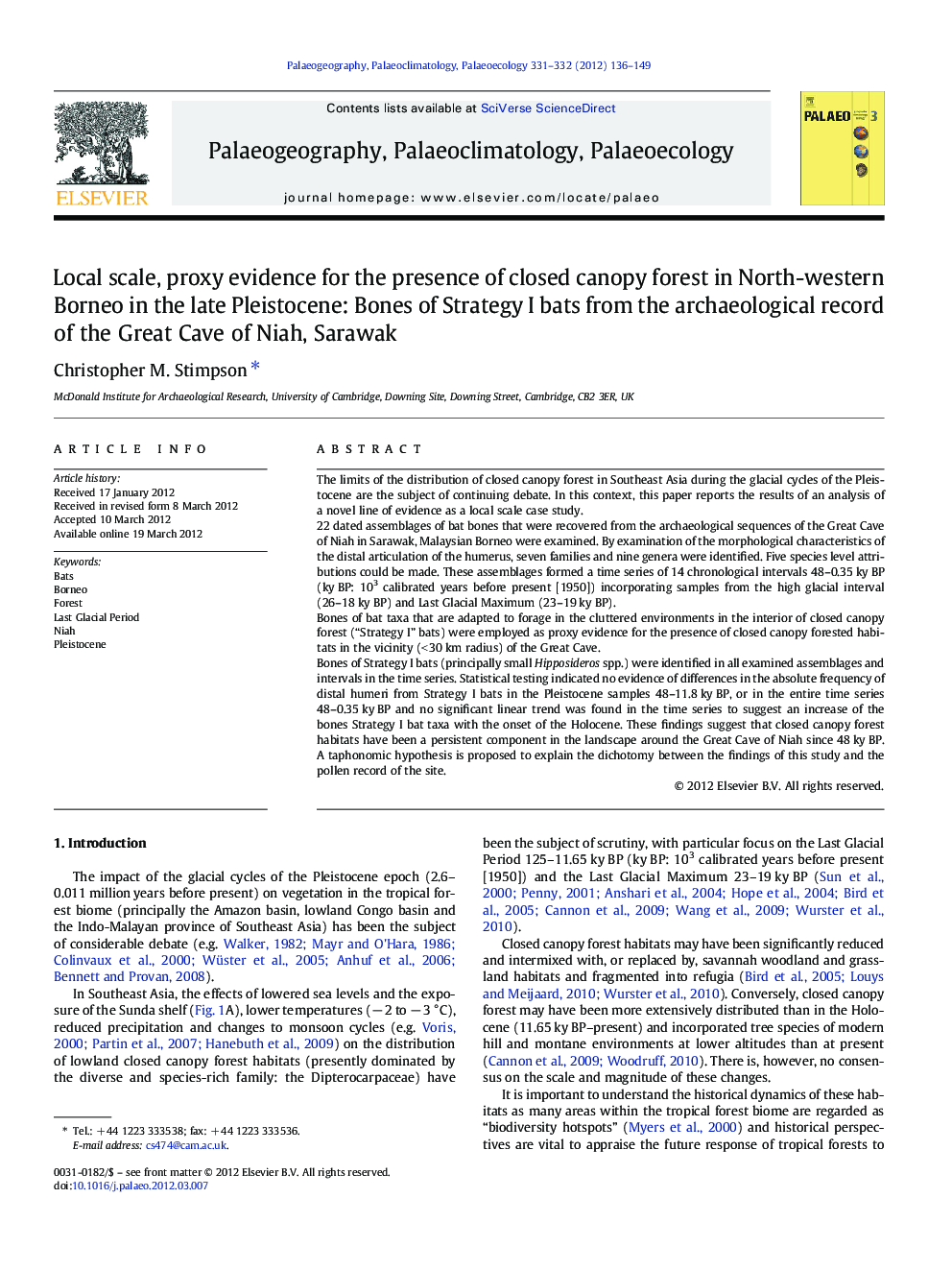| Article ID | Journal | Published Year | Pages | File Type |
|---|---|---|---|---|
| 4466934 | Palaeogeography, Palaeoclimatology, Palaeoecology | 2012 | 14 Pages |
The limits of the distribution of closed canopy forest in Southeast Asia during the glacial cycles of the Pleistocene are the subject of continuing debate. In this context, this paper reports the results of an analysis of a novel line of evidence as a local scale case study.22 dated assemblages of bat bones that were recovered from the archaeological sequences of the Great Cave of Niah in Sarawak, Malaysian Borneo were examined. By examination of the morphological characteristics of the distal articulation of the humerus, seven families and nine genera were identified. Five species level attributions could be made. These assemblages formed a time series of 14 chronological intervals 48–0.35 ky BP (ky BP: 103 calibrated years before present [1950]) incorporating samples from the high glacial interval (26–18 ky BP) and Last Glacial Maximum (23–19 ky BP).Bones of bat taxa that are adapted to forage in the cluttered environments in the interior of closed canopy forest (“Strategy I” bats) were employed as proxy evidence for the presence of closed canopy forested habitats in the vicinity (< 30 km radius) of the Great Cave.Bones of Strategy I bats (principally small Hipposideros spp.) were identified in all examined assemblages and intervals in the time series. Statistical testing indicated no evidence of differences in the absolute frequency of distal humeri from Strategy I bats in the Pleistocene samples 48–11.8 ky BP, or in the entire time series 48–0.35 ky BP and no significant linear trend was found in the time series to suggest an increase of the bones Strategy I bat taxa with the onset of the Holocene. These findings suggest that closed canopy forest habitats have been a persistent component in the landscape around the Great Cave of Niah since 48 ky BP. A taphonomic hypothesis is proposed to explain the dichotomy between the findings of this study and the pollen record of the site.
► Assemblages of bat bones from a cave in North-western Borneo were examined. ► The bone assemblages formed a time series dating 48,000 to 350 yr BP. ► Bones of forest-adapted bats were used as proxy evidence of closed canopy forest. ► Closed canopy forests were present near the cave throughout the late Pleistocene. ► A reassessment of the role of bats as pollen vectors in the cave is recommended.
